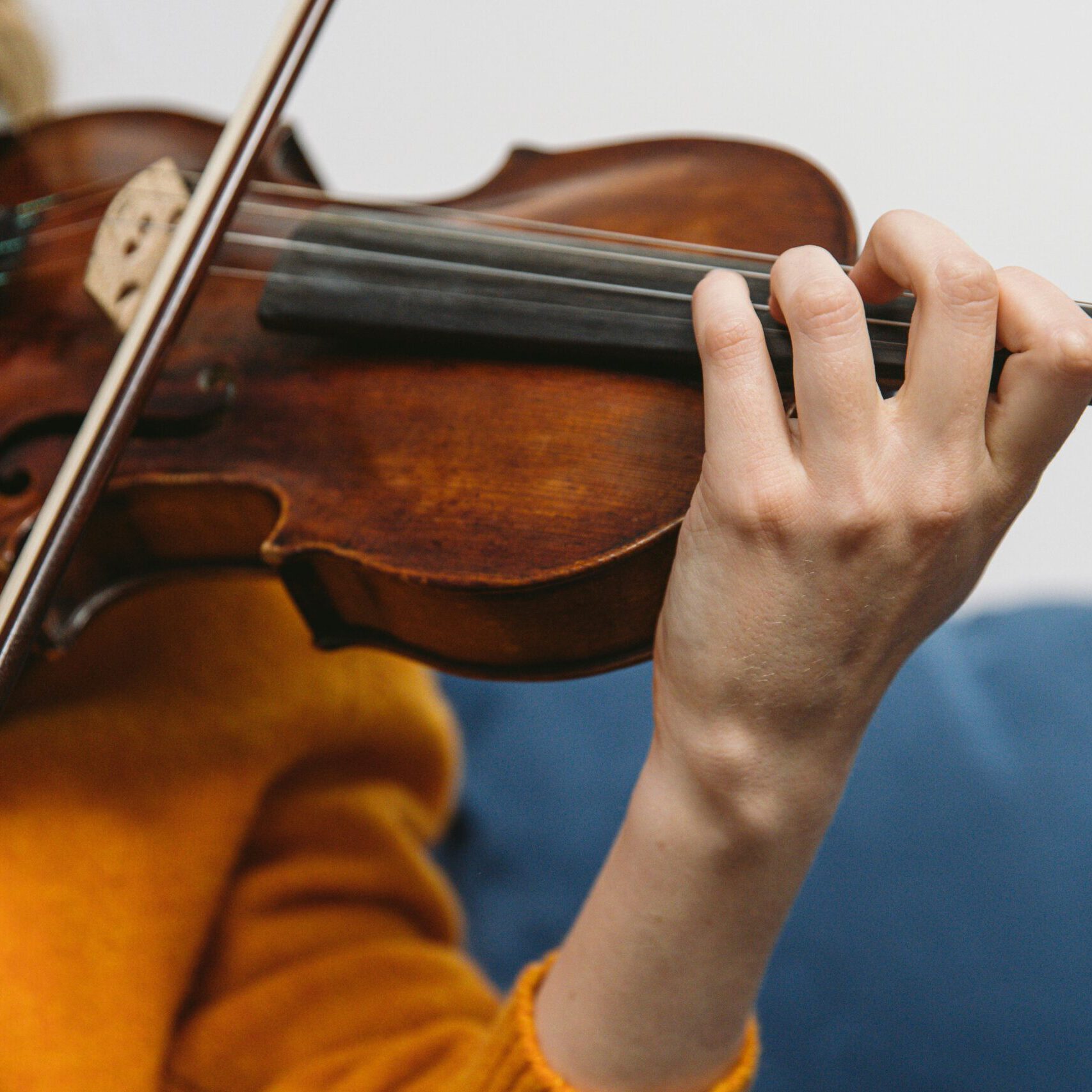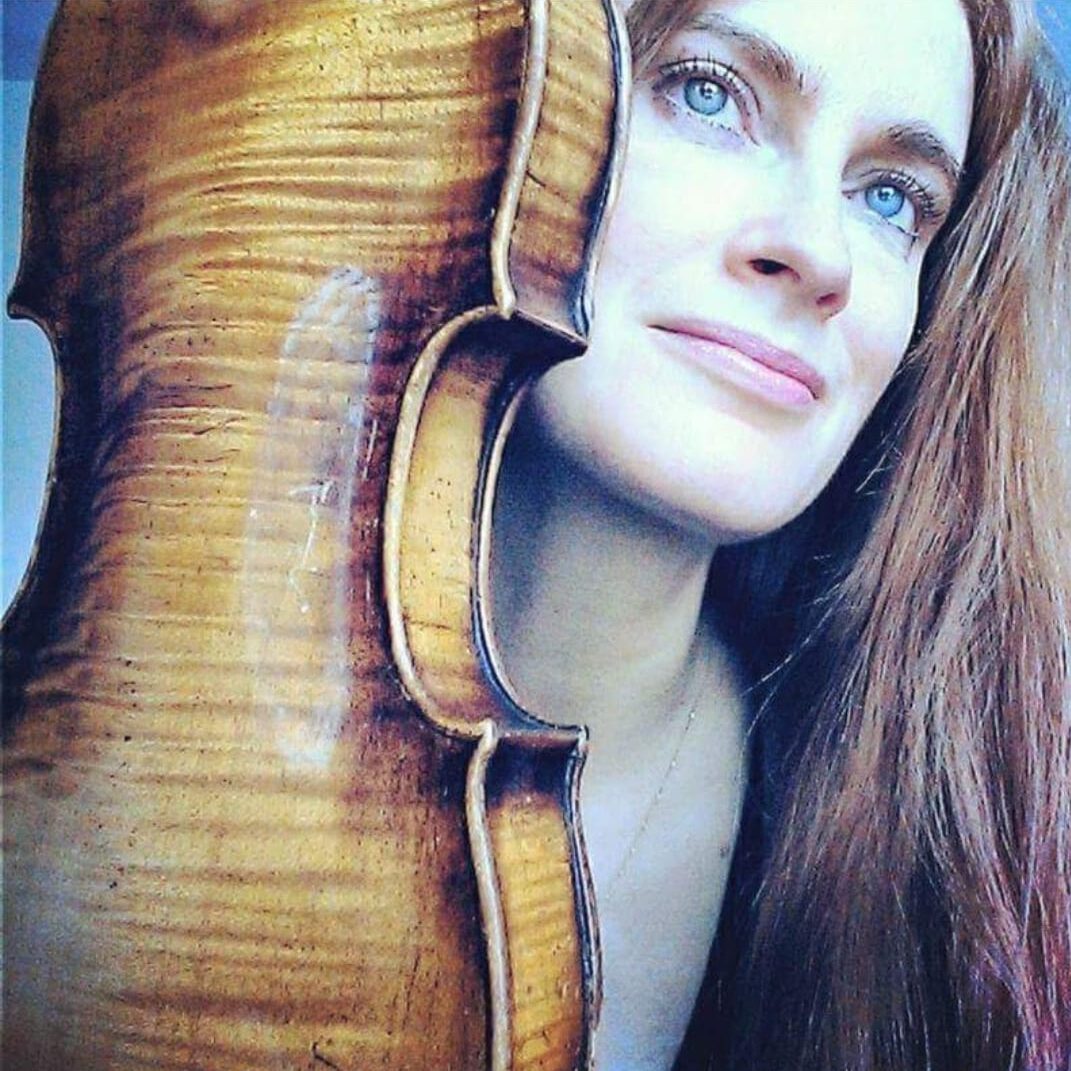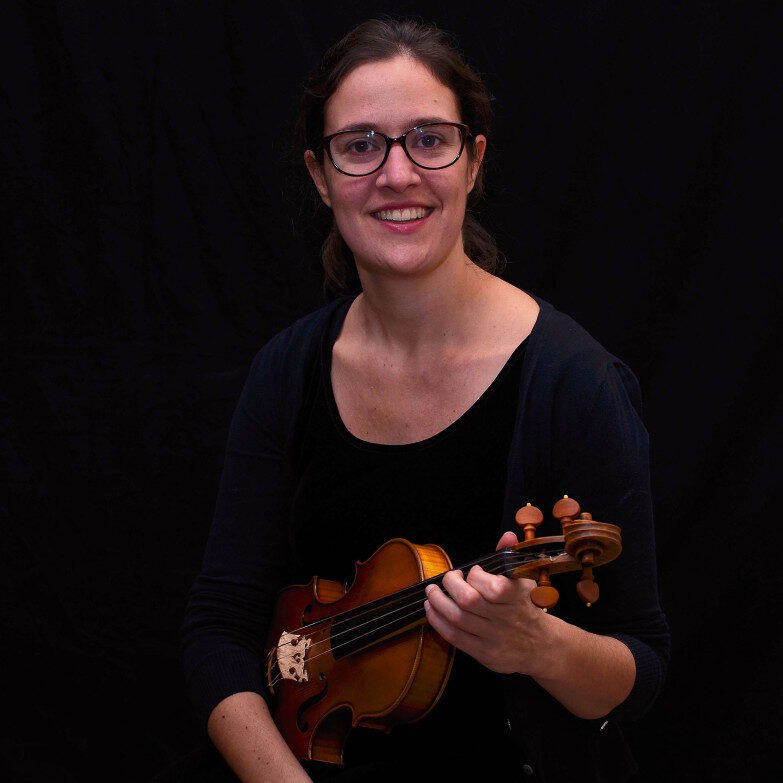The violin is the highest sounding string instrument, and has four strings. There is also a viola; this is a little bit bigger than the violin and it sounds a little lower, you also hold it under your chin. We start by learning to play the violin, later we can possibly switch to the viola.
The violin is a very beautiful instrument that consists of two parts; the violin itself and the bow. You hold the violin up with your left arm and then you can hold the bow in your right hand. You make sound by stroking the strings with the bow. The different notes are made with the fingers of the left hand. Because the right arm makes completely different movements than the left arm, it is important that both arms and hands learn to work well together.
In the first lessons we get to know the violin well, and how it can best be held. Then learning to bow is on the program. When you can bow all kinds of rhythms on open strings, we only start with the left hand. You will learn to play simple melodies on your instrument, in which the purity and tone formation are especially important. This is how you train your hearing. With normal development, quite a few songs can be played by the end of the first year and the basic movements have been learned.
A lot of attention is also paid to playing together, both with a CD and with other students. This is sometimes in smaller groups, but can also be in the String Ensemble if the student has progressed far enough. For beginners, there is now also the Junior String Ensemble
Register for the lessons
Trial lessons
Lesson details
Age: From 4 years (earlier in consultation)
Lesson duration: 20, 25 or 30 minutes weekly or once every 2 weeks, in consultation with the teacher
Lesson day(s): Monday, Wednesday, Thursday, Friday of Saturday
To buy: To be discussed
Teacher(s):
Gabrielle Butler
Monday, Wednesday, Friday
Kim white
Thursday and Saturday
The violin is the highest sounding string instrument, and has four strings. There is also a viola; this is a little bit bigger than the violin and it sounds a little lower, you also hold it under your chin. We start by learning to play the violin, later we can possibly switch to the viola.
The violin is a very beautiful instrument that consists of two parts; the violin itself and the bow. You hold the violin up with your left arm and then you can hold the bow in your right hand. You make sound by stroking the strings with the bow. The different notes are made with the fingers of the left hand. Because the right arm makes completely different movements than the left arm, it is important that both arms and hands learn to work well together.
In the first lessons we get to know the violin well, and how it can best be held. Then learning to bow is on the program. When you can bow all kinds of rhythms on open strings, we only start with the left hand. You will learn to play simple melodies on your instrument, in which the purity and tone formation are especially important. This is how you train your hearing. With normal development, quite a few songs can be played by the end of the first year and the basic movements have been learned.
A lot of attention is also paid to playing together, both with a CD and with other students. This is sometimes in smaller groups, but can also be in the String Ensemble if the student has progressed far enough. For beginners, there is now also the Junior String Ensemble
Register for the lessons
Trial lessons
Lesson details
Age: From 4 years (earlier in consultation)
Lesson duration: 20, 25 or 30 minutes weekly or once every 2 weeks, in consultation with the teacher
Lesson day(s): Monday, Wednesday, Thursday, Friday of Saturday
To buy: To be discussed
Teacher(s):
Gabrielle Butler
Monday, Wednesday, Friday
Kim white
Thursday and Saturday




